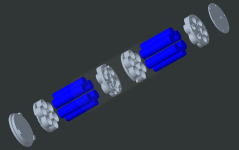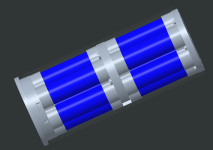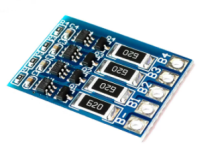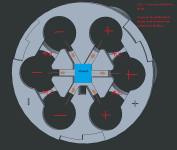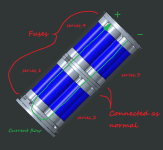Hello all,
As mentioned in a thread before this one I'm trying to diy a dive light.
Due to the amount of Leds it's going to be a 4s lion canister. (12 total 18650 cells, so 4s3p)
At this point I've decided which BMS to use but I'm a bit stuck on the balancing aspect. (BMS does not support it.)
Does a setup like this require (passive) balancing? All cells are new and the same model so any differences in capacity should be minimal I hope.
I'm trying to avoid having a small internal balancing board since I'm worried about the heat.
How do you guys make the battery setup? Internal balancing board, external balancing charger or no balancing at all?
Thank you.
Added some pictures of the internals as they are now in CAD. Totally overdesigned but that's the fun of it. 🤷♂️
As mentioned in a thread before this one I'm trying to diy a dive light.
Due to the amount of Leds it's going to be a 4s lion canister. (12 total 18650 cells, so 4s3p)
At this point I've decided which BMS to use but I'm a bit stuck on the balancing aspect. (BMS does not support it.)
Does a setup like this require (passive) balancing? All cells are new and the same model so any differences in capacity should be minimal I hope.
I'm trying to avoid having a small internal balancing board since I'm worried about the heat.
How do you guys make the battery setup? Internal balancing board, external balancing charger or no balancing at all?
Thank you.
Added some pictures of the internals as they are now in CAD. Totally overdesigned but that's the fun of it. 🤷♂️


